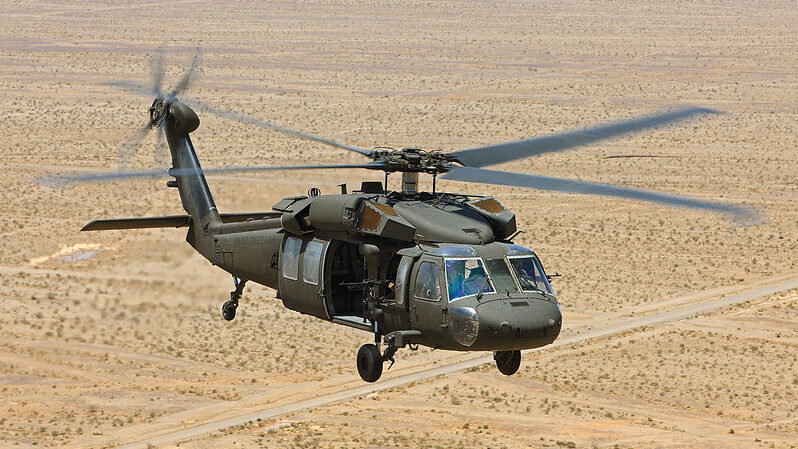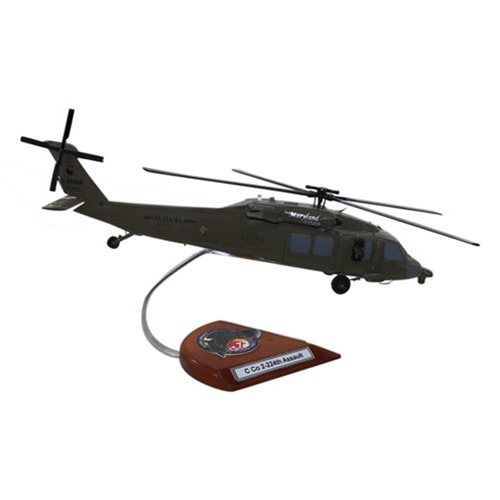Recognizing the UH60: The Ultimate Armed Force Helicopter Experience
The UH-60 Black Hawk helicopter represents a crucial evolution in armed forces air travel, integrating robust engineering with multifaceted operational capabilities. Its design provides to a variety of objectives-- from troop transport to clinical evacuation-- demonstrating its adaptability throughout diverse battle situations. As we check out the background, requirements, and technical innovations of the UH-60, it comes to be obvious that its function in forming contemporary military strategies is both substantial and significant. This discussion welcomes a better exam of just how this exceptional aircraft remains to affect modern war characteristics.
Background of the UH-60
Arising from the need for a flexible utility helicopter during the late 1960s, the UH-60 Black Hawk was established by Sikorsky Aircraft Firm in reaction to the united state Army's need for a modern-day field of battle transport helicopter. The design procedure started in 1972, culminating in its very first trip in October 1974. The Black Hawk was engineered to replace the aging UH-1 Iroquois, also understood as the "Huey," which had actually been a staple of Military aviation since the Vietnam Battle.

For many years, the Black Hawk has actually undertaken countless upgrades, keeping its importance in modern-day armed forces procedures. Its success has actually brought about the development of numerous variations, offering numerous branches of the united state army and allied pressures worldwide, establishing the UH-60 as a cornerstone of armed forces air travel history
Key Features and Requirements
The UH-60 Black Hawk is distinguished by its advanced layout and durable specs, which add to its versatility on the combat zone. This multi-role helicopter features a twin-engine setup, powered by 2 General Electric T700-GE-701C engines, delivering a maximum result of 1,800 shaft horse power each. This effective engine configuration enables the Black Hawk to reach an optimum speed of roughly 183 knots (211 mph) and a solution ceiling of 19,000 feet.
The airplane's composite rotor blades offer phenomenal lift and ability to move, while its four-blade primary rotor system boosts security (UH60). The Black Hawk is geared up with advanced avionics, including an electronic cockpit and evening vision abilities, guaranteeing effective procedures in diverse problems. Its cabin can fit up to 11 soldiers or bring up to 8,000 extra pounds of cargo, making it ideal for different logistical needs
The UH-60's modular layout permits very easy upkeep and upgrades, making certain durability and adaptability in developing military needs. Additionally, its innovative survivability attributes, such as crashworthy seats and armor, boost crew safety and security during goals. In general, the UH-60 Black Hawk stands for a considerable advancement in armed forces aeronautics technology.
Operational Functions and Goals
Flexibility is a trademark of the UH-60 Black Hawk, enabling it to do a wide variety of functional functions and objectives throughout different army environments. Mostly designed for army transport, the Black Hawk can lug approximately 11 soldiers and is frequently utilized in air attack procedures, allowing rapid insertion and extraction of ground pressures in objected to areas.

Along with troop transport, the UH-60 is adept at clinical evacuation (MEDEVAC) missions. Outfitted with sophisticated clinical tools and workers, it can swiftly leave wounded soldiers from the combat zone, considerably improving survival prices in vital scenarios. The helicopter additionally plays a vital duty in logistics sustain, supplying products, ammo, and tools to onward running bases in ascetic settings.
In Addition, the Black Hawk works as a system for unique procedures missions, including reconnaissance and direct action. Its capability to run in different surfaces and its low-flying capabilities make it a necessary asset for units conducting concealed procedures.

Technological Advancements
Innovation in aeronautics modern technology has significantly boosted the abilities of the UH-60 Black Hawk, ensuring its importance in contemporary military procedures. The helicopter is furnished with sophisticated avionics systems that offer pilots with premium situational understanding, including multi-functional screens, enhanced GPS, and cutting-edge surface understanding systems. These features enable specific navigating and mission implementation, even in tough settings.
Additionally, the combination of digital interactions systems allows for instantaneous and safe information exchange between devices, helping with coordinated operations. The UH-60's updated rotor systems and composite materials add to improved efficiency, offering higher speed, agility, and minimized upkeep costs.
Furthermore, navigate to this site innovations in weapon systems, such as the ability to release precision-guided artilleries, enhance the Black Hawk's role in battle circumstances. The helicopter's capacity to support clinical discharge missions is also boosted by brand-new clinical devices and innovations, making certain efficient client care in transit.
Finally, recurring improvements in stealth modern technology and sound decrease devices further solidify the UH-60's effectiveness in hidden operations, allowing it to run in hostile territories with a lowered chance of discovery. Jointly, these technical advancements underscore the Black Hawk's enduring importance in army aeronautics.
Influence On Modern Warfare
Enhanced capacities of the UH-60 Black Hawk have actually exceptionally influenced modern war methods and additional hints tactics. Its flexibility in troop transportation, medevac operations, and reconnaissance roles has actually redefined the operational landscape for army pressures. The helicopter's ability to run in varied environments, from city setups to rugged surfaces, enables greater tactical flexibility, allowing leaders to adjust swiftly to transforming combat zone conditions.
The UH-60's sophisticated avionics and communication systems boost situational understanding, facilitating real-time knowledge sharing and coordination among units. This capacity is important in modern uneven warfare, where rapid decision-making can determine the result of engagements. The helicopter's capability for quick insertion and extraction of special procedures forces has come to be a characteristic of modern military projects, emphasizing rate and precision.
In Addition, the Black Hawk's assimilation with unmanned airborne systems and other sophisticated innovations represents a shift in the direction of multi-domain operations. As an outcome, the UH-60 not just functions as an important property in standard conflicts however additionally plays a pivotal function in counterinsurgency and peacekeeping objectives, emphasizing its long-lasting influence on modern armed forces doctrine and the development of war.
Verdict
The UH-60 Black Hawk represents a peak of army aeronautics, identified by its convenience, progressed engineering, and robust layout. Continual technical developments and enhancements have more strengthened the Black Hawk's critical significance, enabling rapid feedback and flexibility in varied combat situations.

Development in aviation innovation has actually substantially enhanced the abilities of the UH-60 Black Hawk, guaranteeing its significance in modern-day armed forces procedures.The UH-60 Black Hawk represents a peak of army air travel, identified by its adaptability, advanced engineering, and durable design.